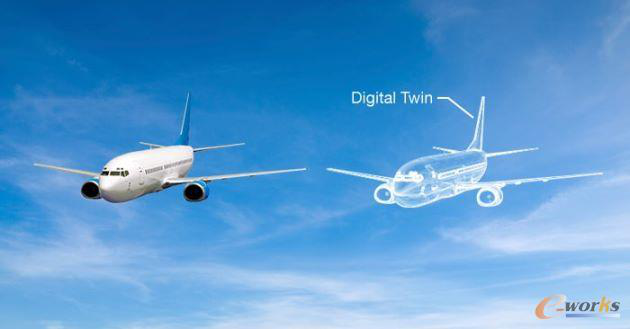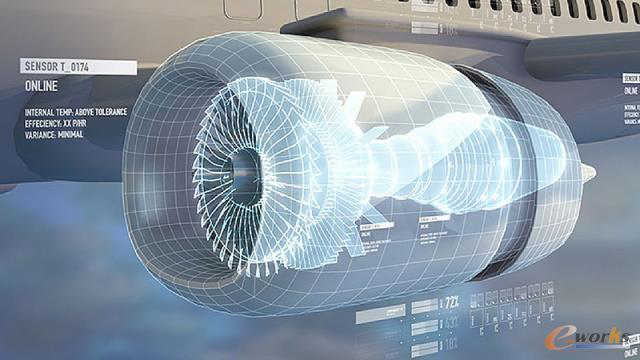Reflections on Boeing 737MAX Air Crash From the Perspective of Digital Technology Application
On the morning of March 10, 2019, a Boeing 737-MAX8 with 149 passengers crashed near the Ethiopian capital Addis Ababa, killing all passengers, including eight Chinese citizens. What a disaster! This is the second plane crash since the Lion Air crash in Indonesia on October 29, which killed 189 people on Boeing 737-MAX8. It’s incredible that Boeing 737-MAX8 experienced two air crashes In less than five months. And on March 4, Air China Flight CA983 (Boeing 777-300ER) had to land in Russia for emergency evacuation because of fire alarm information failure, which also caused a false alarm to passengers.
The security risks of highly complex "software-defined" products cannot be ignored
Among Boeing's products, Boeing 737 MAX is a derivative of Boeing 737 equipped with a new engine. As of January 2019, 350 Boeing 737 MAX have been delivered, with orders reaching 5077, making it one of Boeing's most popular aircraft.
If Boeing 787 integrates the high-tech achievements of civil airliners, then Boeing 737MAX also fully follows its digital technology and concept, and is even called the ultimate evolution of evergreen airliners. In the aspect of aircraft system, 737 MAX has made a series of improvements, including: telex spoiler system to improve reliability, reduce weight and shorten landing and taxiing distance; electric air intake system to further optimize cabin pressure and anti-icing system, which also benefits fuel efficiency; the airborne network system. 737 MAX will adopt an enhanced airborne network system, including digital flight data acquisition unit (eDFDAU) and network file server (NFS). These systems provide a whole new set of capabilities, such as advanced data collection capabilities, onboard storage of pre-loaded aircraft software, and real-time data processing.
According to public data, Boeing 737MAX has "brain" and "nerve" constructed by software and network. Sensors and many hardware functions are implemented and expanded by open software. It can be said that 737MAX, like 787, is "smart". Its data processing and network capabilities have been greatly improved. It can provide more entertainment choices for passengers and improve the efficiency of maintenance and operation.
737 MAX adopts a more centralized "built-in test equipment" system, which makes it easier for maintenance technicians to obtain maintenance information. In the past, the fault information of aircraft can only be obtained from the aircraft's front electronic cabin, which takes more time. At the same time, Boeing 737 MAX has further enhanced the connection capability to provide real-time data on aircraft systems to the ground during flight. All these are designed to make it easier for airlines to make operational decisions about maintenance.
The advantages of the new generation of fully digital airliners are obvious: better energy efficiency, stronger avionics and airborne systems, more transparent airplane health, better passenger experience. However, no matter how powerful the functions are, no matter how high the fuel economy is, no matter how comfortable the cabin environment is, if there are potential flight safety hazards, everything is in vain! In the process of realizing digitalization and intellectualization of products, we should adhere to an important bottom line, that is, reliability and safety.
Autopilot has been popular in civil aviation for decades. The autopilot system will drive an aircraft according to a predetermined flight path, or even complete landing. According to the findings of the lion Air Boeing 737Max crash, the problem may arise from the aircraft's autopilot system.
The automatic driving system of this type of aircraft has an intelligent function.
When the sensor detects the loss of lift or aerodynamic stall, the airliner will automatically be accelerated by dive. However, the function is not accurately described in the relevant operation manual. The system automatically triggered the wrong decision based on the wrong information, and could not intervene manually, which may be one of the causes of the two disasters. The automatic driving system is designed to prevent mistakes through so-called intelligence, but resulted in two falls. Although the conclusions of this investigation have not yet come out, there are still major suspicions that the downward dive of the aircraft is caused by the faults of the angle of attack sensor.

Digital Twin Diagram of Aircraft
Reflections on the Application of Digital Technology
As we all know, civil aviation aircraft is a very complex "system of system". There are many subsystems, involving many disciplines such as electro-hydraulic and so on. Modern aircraft uses a large number of composite materials. Aircraft like Boeing 737MAX can be said to be "software-defined smart products", with a huge amount of software code, as well as sensors. As a new generation of civil aircraft, automatic driving system has also become standard. Therefore, in order to ensure the safety and reliability of aircraft performance, a large number of experiments need to be carried out under various conditions, climatic conditions and loads. At the same time, a variety of simulation software will be widely used to simulate all kinds of situations that may occur hidden troubles and verify the reliability of products.These two Boeing 737 MAX crashes should arouse the following reflection from the perspective of digital technology application:
1. Man-machine cooperation rather than machine replacement.
When the automobile drives automatically, the driver can stop it by pressing the brake. As for more complex civil aviation aircraft, if the automatic driving state is lifted, the automatic driving system should be completely stopped and the driver will command the aircraft. It only retains the function of sensing, but can not be automatically executed. That is to say, the fault information can be transmitted to the dashboard and judged by the pilot, instead of automatically adjusting the tail. Japanese enterprises attach great importance to "自働化", that is, human-machine cooperation,instead of blindly pushing machine replacement. Therefore, Japanese enterprises actively promote the application of Andon system, which displays the faults of the production line in real time and lets people collaborate and deal with them.
2. The direction of digital and intelligent technology development is to enhance people's skills and help people improve efficiency, rather than replace people.
IBM proposed that the development direction of AI is Augmented Intelligence, or Assistant Intelligence. The development of AI technology should provide better service for human beings and assist them to make correct decisions. Artificial intelligence programs can surpass humans in certain areas of expertise, such as chess, image recognition, fault prediction, etc. But this does not mean that in actual production and life, the judgment made by artificial intelligence can replace the ability of human beings to make correct judgment quickly in complex situations, relying on their own experience, or even intuition.
3. While promoting the application of "Digital Twin", do not easily control physical products through digital models.
At present, Digital Twin is a hot spot for enterprises. Throughout the product life cycle, Digital Twin can make full use of the data of physical model, sensor and operation history to integrate the multi-disciplinary and multi-scale simulation process as a mirror of physical products in virtual space, mapping the corresponding physical entity product life cycle process.
In the field of aeronautics, the digital twin model of an aircraft is mapped one-to-one with the physical product. It includes not only the traditional geometric model, but also a series of data fed back by the physical realization links such as material properties, production, inspection, mechanical analysis, aerodynamics, health maintenance and flight test.
In the functional level that Digital Twin can achieve, the first is state display; the second is monitoring, diagnosis and prediction; the third is to add factors such as environment, manpower and process, which is more conducive to analysis, prediction and control. From the two aircraft crashes, it can be seen that there is a great risk in superimposing the digital twins of physical aircraft into the extremely complex aviation flight environment, if only according to the digital model to control the physical products. Once fault occurs, the digital model can not correct the impact of the external environment, or there is no complete human intervention mechanism. The automatic driving system makes wrong judgments and executes control, which will cause irreparable calamities.
With the in-depth application of digital technology, a large number of physical and mathematical models have been generated in the product life cycle of enterprises. How to map them effectively, safely and reliably, and how to make digital twin include real-time complete information of products are more important than establishing digital twin itself. In this process, enterprises must pay attention to the construction of digital twin security precautions, establish a hierarchical management system based on risk analysis and coordinated with domestic and foreign standards. At the same time, human intervention mechanism should not be ignored. While making full use of "Digital Twin", we should not easily control physical products through digital models.

Digital Twin of Aeroengine
Looking back on the history of civil aviation, there are many lessons from accidents behind every progress of aviation safety. Let's remember the deceased and thank everyone who has worked hard for aviation safety. It's because of them that we still love flying!
At the same time, we also hope that these two accidents can alert us, help us correctly understand the limitations of digital, automation and intelligent technology. While using its advantages, we also need to firmly grasp the future of our own development!








